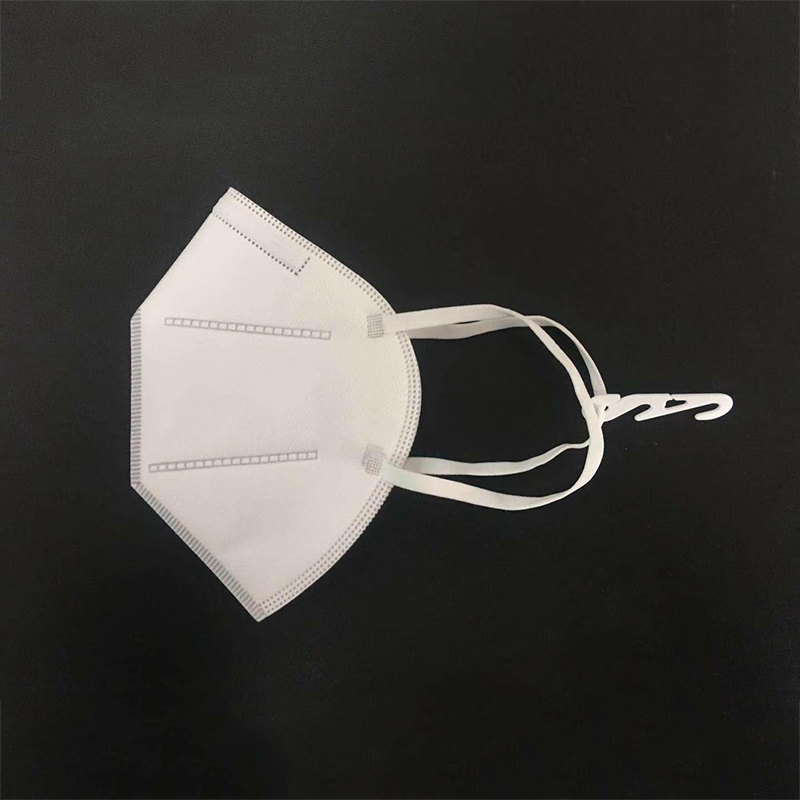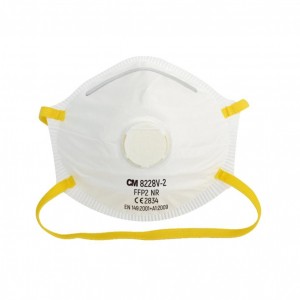
Surgical face mask 6003-2 EO sterilized
Materials
• Surface: 60g non woven fabric
• Second layer: 45g hot air cotton
• Third layer:50g FFP2 filter material
• Inner layer: 30g PP non woven fabric
Approvals and Standards
• EU Standard: EN14683:2019 Type IIR
• EU Standard: EN149:2001 FFP2 Level
• License for the manufacturing of industrial products
Validity
• 2 years
Use for
• Used to protect against particulate matter generated during processing such as grinding, sanding, cleaning, sawing, bagging, or processing of ore, coal, iron ore, flour, metal, wood, pollen, and certain other materials.
Storage Condition
• Humidity<80%, well-ventilated and clean indoor environment without corrosive gas
Country of Origin
• Made in China
| Description |
Box |
Carton |
Gross weight |
Carton size |
| Surgical face mask 6003-2 EO sterilized | 20pcs | 400pcs | 9kg/Carton | 62x37 x38cm |
This product complies with the requirements of EU Regulation (EU) 2016/425 for Personal Protective Equipment and meets the requirements of European standard EN 149:2001+A1:2009. At the same time, it complies with the requirements of EU Regulation (EU) MDD 93/42/EEC on medical devices and meets the requirements of European Standard EN 14683-2019+AC:2019.
User instructions
The mask must be selected properly for intended application. An individual risk assessment must be evaluated. Check the respirator that is undamaged with no visible defects. Check the expiry date that has not been reached (see the packaging). Check the protection class that is appropriate for the product used and its concentration. Do not use the mask if a defect is present or the expiry date has been exceeded. Failure to follow all instructions and limitations could seriously reduce the effectiveness of this particle filtering half mask and could lead to illness, injury or death. A properly selected respirator is essential, before occupational use, the wearer must be trained by the employer in the correct use of the respirator in accordance with applicable safety and health standards.
Intended use
This product is limited to surgical operations and other medical environment where infectious agents are transmitted from staff to patients. The barrier should also be effective in reducing oral and nostril discharge of infectious substances from asymptomatic carriers or clinically symptomatic patients and in protecting against solid and liquid aerosols in other environments.
Using method
1. Hold the mask in hand with the nose clip up. Allow head harness to hang freely.
2. Position the mask under the chin covering mouth and nose.
3. Pull the head harness over the head and position behind head, adjust the length of head harness with adjustable buckle to feel as comfortable as possible.
4. Press soft nose clip to conform snugly around the nose.
5. To check fit, cup both hands over the mask and exhale vigorously. If air flows around nose, tighten the nose clip. If air leaks around the edge, reposition the head harness for better fit. Re-check the seal and repeat the procedure until the mask is sealed properly.

6003-2 EO sterilized passed the EN14683 standard. Test items include Bacterial Filtration Efficiency (BFE) test, differential pressure test, synthetic blood penetration test.
Bacterial Filtration Efficiency (BFE) test
Purpose
For evaluating the Bacterial Filtration Efficiency (BFE) of mask.
Calculation
Total the count from each of the six plates for the test specimens and positive controls, as specified by the manufacture of Anderson sampler. The filtration efficiency percentages are calculated as follows:
BFE=(C-T) / C × 100
T is the total plate count for the test specimen.
C is the mean of the total plate counts for the two positive controls.
Differential pressure test
1.Purpose
The purpose of the test was to measure the differential pressure of masks.
2.Sample description
Sample description: Single-use mask with ear loop
3.Test Method
EN 14683:2019+AC:2019(E) Annex C
4.Apparatus and materials
Differential pressure testing instrument
5.Test specimen
5.1 Test specimen is complete masks or shall be cut from masks. Each specimen shall be able to provide 5 different circular test areas of 2.5 cm in diameter.
5.2 Prior to testing, condition all test specimens for a minimum of 4 h at (21±5)℃ and (85±5)% relative humidity
6. Procedure
6.1 Without a specimen in place, the holder is closed and the differential manometer is zeroed. The pump is started and the flow of air adjusted to 8 L/min.
6.2 The pretreated specimen is placed across the orifice (total area 4.9cm 2, test area diameter 25mm) and clamped into place so as to minimize air leaks.
6.3 Due to the presence of an alignment system the tested area of the specimen should be perfectly in line and across the flow of air.
6.4 The differential pressure is read directly.
6.5 The procedure described in steps 6.1-6.4 is carried out on 5 different areas of the mask and readings averaged.
Synthetic Blood Penetration Test
1.Purpose
For evaluation of resistance of masks to penetration by a fixed volume of synthetic blood at a high velocity.
2.Sample description
Sample description: Single-use mask with ear loop
3.Test Method
ISO 22609:2004
4.Results:
ISO 22609, an acceptable quality limit of 4.0% is met for a normal single sampling plan when ≥29 of 32 test articles show passing results.









